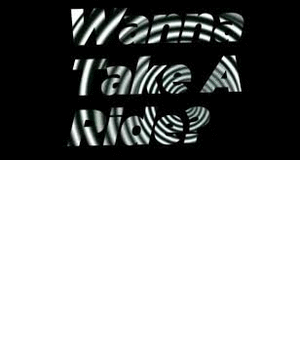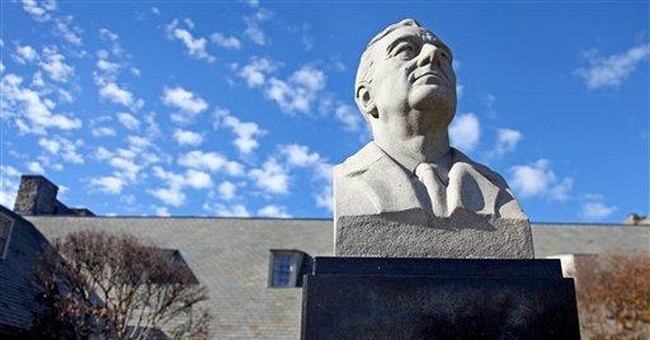The Guy From Pittsburgh ( tm) © Paranormal Discussion & News Forum
A Place for Paranormal fans to come together and have fun
A TROLL CAME IN AND SPAMMED THE FORUM WITH ADS FOR CRYPTO.
HIS MESSAGES HAVE BEEN DELETED & HE HAS BEEN BANNED.
I HAVE NOT BEEN HERE FOR A LONG TIME.
I WILL TRY TO BE ON HERE MORE OFTEN.
I HAD A HORRIBLE BLISTER ON MY LEFT TOE & IT STOPPED MY KNEE SURGERY & I COULD NOT WALK WITHOUT SCREAMING PAIN FOR 2 MONTHS.
THEN I GOT SICK DUE TO MY GRASS ALLERGIES.
I WAS VERY ILL ALL OF MAY & PART OF JUNE & MY BELOVED FLUFFY CAT DIED AT 25 1/4 YEARS IN MAY AS WELL.
I MISS HIM A LOT & IT IS THE FIRST TIME I HAVE NOT HAD A KITTY TO SLEEP WITH ME IN 47 YEARS.
I AM HOPING MAMA CAT AND KITTEN KAT WILL BECOME MY CATS.
THEY LOVED MY CATS AND MAMA ADORED FLUFFY.
A 3.9 QUAKE IN HOLLYWOOD ATTACKED THE OSCARS AFTER PARTY TONIGHT AT 10:15 PM. A 1.2 AFTERSHOCK WAS FELT IN CULVER CITY, CA.
POSTED VIDEOS & LINK IN THE DISASTER FORUM.
PROSPECTIVE CHANNEL MEMBERS WITH EMAILS WITH TOO MANY DOTS, DASHES,SYMBOLS IN THEM OR NAMES TOO HARD OR TOO LONG ( OR EMAILS WITH BODY PARTS, SHAVING, ETC.) TO REMEMBER WILL NOT BE APPROVED NOR WILL USERS USING MULTIPLE MEMBER NAMES WITH THE SAME EMAIL ADDRESS.
I AM NOT GOING TO BE ABLE TO RECALL EMAIL ADDRESSES THAT ARE TOO HARD TO REMEMBER TO TYPE THEM IF I HAVE TO SEND A MESSAGE TO YOU SO PLEASE DO NOT DO IT.
2-22-2025.
I HAVE BEEN DEALING WITH THE EFFECTS OF A FALL LAST NOVEMBER WHERE I RE-FRACTURED BOTH OF MY KNEECAPS AND BROKE MY NOSE.
IT TOOK A MONTH FOR ME TO WALK AGAIN & HAS LEFT ME WITH VERY BAD PAIN EVERY DAY SINCE.
THEN I WAS WORKING ON FINALLY GETTING MY RIGHT KNEE REPLACEMENT DONE AFTER WAITING 18 YEARS BECAUSE MY HEALTH PROVIDER SAID IT WAS NOT MEDICALLY NECESSARY AND THEN A WEIRD TUBULAR RUBBERY THING APPEARED ON THE TOE NEXT TO MY BIG LEFT TOE. IT EXPLODED AND MY TOE GOT INFECTED SO NPW I HAVE TO GO TO A FOOT DOCTOR NEXT WEEK AND I WILL NOT GET MY KNEE SURGERY UNTIL THE TOE IS HEALED & THE INFECTION IS NO MORE. I WAS 4 DAYS AWAY FROM MY SURGERY WHEN MY SURGEON SAID HE WOULD NOT OPERATE IF I HAVE AN ACTIVE INFECTION. BOTH KATHY & I THINK HE DOES NOT WANT TO DO THE SURGERY AT ALL FOR REASONS I WON'T GO INTO BUT THERE IS NOTHING I CAN DO FOR NOW.
IN DECEMBER I STARTED MY 14TH YEAR ON YOUTUBE.!
MY CHANNEL VIEWS ARE NOW AT 1,449,449 !
George Noory interview now AT 4,500 views.
Kathy's Katz video with first appearance of Caesar the Kat now at 4,090 views.
Have a great day everyone !
- Admin
- Administrator
 Offline
Offline 
- Registered: 2/05/2014
- Posts: 19,868
HOW FDR'S ECONOMIC POLICIES DESTROYED BUSINESS FOR 11 YRS
TOWNHALL. COM
How FDR Systematically Destroyed Business Investment For 11 Years Jim Huntzinger|Posted: Oct 21, 2019 9:16 AM
Jim Huntzinger|Posted: Oct 21, 2019 9:16 AM  Source: AP Photo/Craig Ruttle The great Austrian economist Murray Rothbard elucidated, “Before the massive government interventions of the 1930s, all recessions were short-lived.”[1] The deceptive narrative of collectivists about the “Roaring Twenties” and the New Deal goes like this:
Source: AP Photo/Craig Ruttle The great Austrian economist Murray Rothbard elucidated, “Before the massive government interventions of the 1930s, all recessions were short-lived.”[1] The deceptive narrative of collectivists about the “Roaring Twenties” and the New Deal goes like this:
Capitalists and speculators went wild with greed in “The Roaring Twenties,” leading to a stock market crash and hard times. Banks closed, once prosperous workers sold apples on street-corners or became hobos in shanty-towns, while Republican President Herbert Hoover did nothing for the destitute and suffering nation. Then FDR arrived on the scene, inspiring new hope with his golden words “the only thing to fear is fear itself” and a flurry of radical reform in his first hundred days in office. While conservatives squealed, this “new deal for the American people” improved the lives of everyone and got the economy humming again – just in time to face the challenges of World War II.[2]
Franklin Roosevelt worked hard to derail the Great Experiment and had utter disdain for American exceptionalism. He believed – and implemented through legislative and executive orders – that the federal government, and more specifically his federal government, was the best and wisest option for control and decisions for all Americans. “Using the radio and press openly, Roosevelt drives to the restricting of the U.S. economy taking place through a broad range of programs. The goal of these actions, to “stabilize the economy for all times” and ensure “greater security for the common man” are themes which occur again and again in the Fireside chats and press conference transcripts from 1933 to 1938. Roosevelt is quite visible, and vocal, in his effort to restructure the social rule system to ensure greater distributive equity.”[3][/url] “During the New Deal, for the first time in the history of our nation the primary purpose of government became taking money from a person who owned it (primarily through the income tax) and giving it to a person who the government felt needed it more (through various welfare programs).”[url=][4][/url] “[T]he use of income taxes as a means of partial economic planning [always results] in a loss of individual liberty.”[url=][5][/url]Roosevelt had both disdain and paranoia of business and industry men, and businessmen. In fact, entrepreneurs saw Roosevelt as a socialist desiring a dictatorship. Investors nearly shut down completely any investment into business and industry. The people who would normally drive the economic upward swing following a recession literally feared “the security of their property rights in their capital and its prospective returns.”[url=][6][/url] From 1929 to 1932 investments plummeted from almost 16 percent of GDP to less than 2 percent GDP, and would remain below the 1929 level until after the end of WWII. [url=][7][/url] Conventional thinking is that WWII brought the United States out of the Depression, but gross private investment would linger at on 3 to 6 percent during the war, demonstrating that WWII did not cause the recovery; but, in fact, deferred the recovery until the post-war years when gross private investment would range from 14 to 19 percent between 1946 to 1950 – levels not seen since 1929.[url=][8][/url] Net investment also plunged from 1931 to 1935 totaling minus $18.3 billion, then for the period from 1930 to 1940 net total investment was a minus $3.1 billion.[url=][9][/url] Investors conclusively showed their fear and contempt for the Roosevelt economy. Robert Higgs conspicuously explains, “Eleven years is an extraordinarily long time for investment to remain drastically subpar.”[url=][10][/url]Taxation also had a significant negative impact on Americans and business as a result of the interventionist Republican and Democratic administrations of the late 1920s and the 1930s. University of Alabama historian, Dr. David Beito, reports in his research that “Not even during World War I had taxes ever taken such a large percentage of the national income.” Dr. Beito continues by disclosing that “Taxes at the local level more than doubled, rising from 5.4 percent of the national income in 1929 to an unheard of 11.7 percent in 1932.”[url=][11][/url] The sharp increase in taxes also resulted in a substantial increase in tax delinquency increasing the typical rate of 10 percent up to above 30 percent.[url=][12][/url] Mark Thornton and Chetley Weise, of the Mises Institute, explain that this shift resulted from the massive loss of revenue to the government with the establishment of Prohibition. “From 1870 to 1920,” reports Thornton and Weise, “customs and liquor taxes provided nearly 80 percent of all federal revenue.” In 1917 tax revenue was nearly three times that of 1916 with liquor licensing alone, in the 1930s increasing revenue from zero in 1932 to over $40 million in 1936, to $70 million at the end of the 1930s.[url=][13] Government policies have a direct impact on the health of our economy; and we have plenty of historical data to guide us to which polices should and should not be applied. The only question is do we have enough discernment, wisdom and fortitude to demand and apply the best polices?
[1][/url] Murray N. Rothbard, 2008 (originally published in 1963), America’s Great Depression, (Auburn, AL: Ludwig von Mises Institute), p. xxix.[url=][2][/url] Michael Medved, October 24, 2007, “How Government Expansion Worsens Hard Times,” townhall.com, []. [url=][3][/url] CJ McNair, Ted Watts, and Richard Vangermeersch, Working paper 2006, “Conditional Truth: The Rhetoric of Cost in Twentieth Century America,” (Copy sent to author by Dr. McNair), p. 5.[url=][4][/url] Jacob G. Hornberger, June 2002 – May 2003, “Economic Liberty and the Constitution,” Freedom Daily, (Fairfax, VA: The Future of Freedom Foundation), Part 8, The Great Depression and the socialist tide, [].[url=][5][/url] D.W. Mackenzie, April 1, 2007, “Tools on the Road to Serfdom,” The Freeman Online Vol. 57, No. 3, p. 8, [].[url=][6][/url] Robert Higgs, Spring 1997, “Regime Uncertainty: Why the Great Depression Lasted So Long and Why Prosperity Resumed after the War,” The Independent Review, Vol. 1, No. 4, p. 563.[url=][7][/url] Robert Higgs, Spring 1997, “Regime Uncertainty: Why the Great Depression Lasted So Long and Why Prosperity Resumed after the War,” The Independent Review, Vol. 1, No. 4, p. 566 and see Figure 1 on p. 565 and Figure 2 on p. 566.[url=][8][/url] Robert Higgs, Spring 1997, “Regime Uncertainty: Why the Great Depression Lasted So Long and Why Prosperity Resumed after the War,” The Independent Review, Vol. 1, No. 4, p. 566.[url=][9][/url] Robert Higgs, Spring 1997, “Regime Uncertainty: Why the Great Depression Lasted So Long and Why Prosperity Resumed after the War,” The Independent Review, Vol. 1, No. 4, p. 567.[url=][10][/url] Robert Higgs, Spring 1997, “Regime Uncertainty: Why the Great Depression Lasted So Long and Why Prosperity Resumed after the War,” The Independent Review, Vol. 1, No. 4, p. 567.[url=][11][/url] David T. Beito, 1989, Taxpayers in Revolt: Tax Resistance during the Great Depression, (Chapel Hill, NC: The University of North Carolina Press), p. 6.[url=][12][/url] Mark Thornton and Chetley Weise, Summer 2001, “The Great Depression Tax Revolts Revisited,” (Journal of Libertarian Studies, Vol. 15, No. 3), p. 98.[url=][13] Mark Thornton and Chetley Weise, Summer 2001, “The Great Depression Tax Revolts Revisited,” (Journal of Libertarian Studies, Vol. 15, No. 3), pp. 98-101.
Last edited by Admin (10/22/2019 3:46 am)
Looking to control the internet, one video at a time.
In a nice way, of course.
" Never let the enemy pick the battle site. - George S. Patton, Jr. "
Never let them deflate your balls.
Why not stop peeking and JOIN and contribute ? Both I and just69_98 KNOW you're out there.
 1 of 1
1 of 1